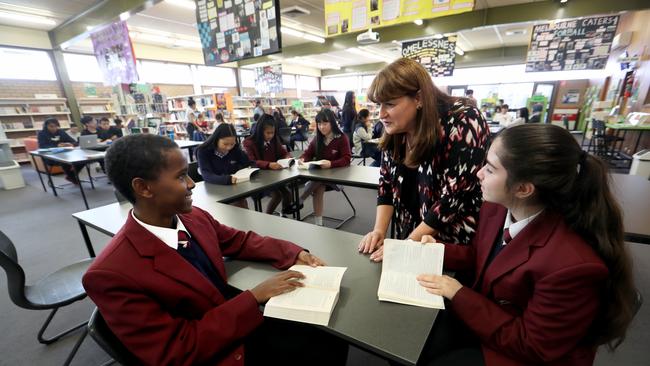Give teachers the tools for a calm, orderly classroom

For teachers it means that they spend significant time settling the class and have less time to actually teach. One in three teachers reports losing teaching time because of student disruption.
For students it means constant distractions to their learning. A raft of surveys shows that Australia’s students are dissatisfied with the level of disruption in their classrooms. They know it is affecting their learning and they don’t like it.
Studies such as the OECD’s Program for International Student Assessment show that Australian classrooms are some of the most disrupted in the world, with Australia one of the lowest ranked countries on levels of classroom disruption.
The fact is that Australian teachers have not been taught properly the simple but effective strategies of classroom management. As a 2023 expert report on teacher education found, many beginning teachers feel unprepared for the classroom at the start of their careers.
My observations from coaching teachers align with this.
Last month, a year-long Senate inquiry into classroom disruption released its interim report. It calls for students to be taught how to behave in schools and for teachers to be supported to develop the latest evidence-based skills to manage classroom behaviour.
As the report points out, if teachers are to be responsible for student learning, as they should be, they must have all the tools and techniques to create safe and ordered learning environments in the nation’s classrooms. How well teachers manage classrooms determines how much learning takes place and therefore is one of the key drivers of the country’s educational performance.
To deliver this knowledge and practical guidance into the hands of classroom teachers and school leaders, the Australian Education Research Organisation was commissioned by the federal government to produce a set of resources that could guide teachers on how to implement effective classroom management.
The AERO resources have been produced in the knowledge that student learning does not happen by chance. The actions a teacher takes to develop a calm, orderly and inclusive learning environment begin outside the classroom in a well-thought-out plan incorporating evidence-based strategies.

The resources focus on the introduction of simple routines into Australian classrooms. The routines make explicit to students what behaviour is expected of them at all times. In my long experience in the classroom and in teacher education, I have learnt that a great deal of misbehaviour stems from the absence of clear expectations, guidance and practice for students on how to behave. Where these are applied with consistency and fidelity, the conditions for learning are transformed.
AERO has provided Australian teachers precisely what they should have been given in their teaching degrees – the background knowledge, practical guidance and techniques to create ordered classrooms.
Techniques outlined in the resources include: how to build teacher-student relationships; how to set higher expectations; how to explicitly teach behaviour; entry and exit and gaining student attention routines; how to deliver verbal and non-verbal correction; and a range of important skills such as proximity, voice, deliberately pausing and many others that experienced and effective teachers know and use. The difference between impactful and less impactful teachers is how they use these skills in their classrooms.
The resources were designed not to shy away from the reality that students will misbehave. In schools we know that all students will misbehave at some time. The resources outline how teachers can respond to student disengagement and disruptive behaviour. Consequences and sanctions are necessary in schools and the resources support this in practical ways.
These strategies have the most impact when incorporated into a whole-school approach, as it is important to build consistent expectations for students as they progress between classes. School leaders also play an important role in effective classroom management by sharing best-practice resources and supporting staff to use them. Evidence shows these classroom management practices create more time for teaching and learning, which is good news for teachers and students alike.
Australia has 9500 schools. Most, but not all of them, have issues with disruptive classrooms. It will take a lot for the tide to turn in our schools and for more calm and orderly classrooms conducive to learning to become the norm. But these resources are unique in the Australian landscape and in time will create more time for teaching and learning. That is good news for teachers and students alike.
Tim McDonald is a classroom management expert advising on AERO’s Engaged Classrooms Through Effective Management project. He is chief executive of YWA.






Through my work in classrooms across Australia, I have seen the toll low-level disruptive behaviour is taking on teachers and students.